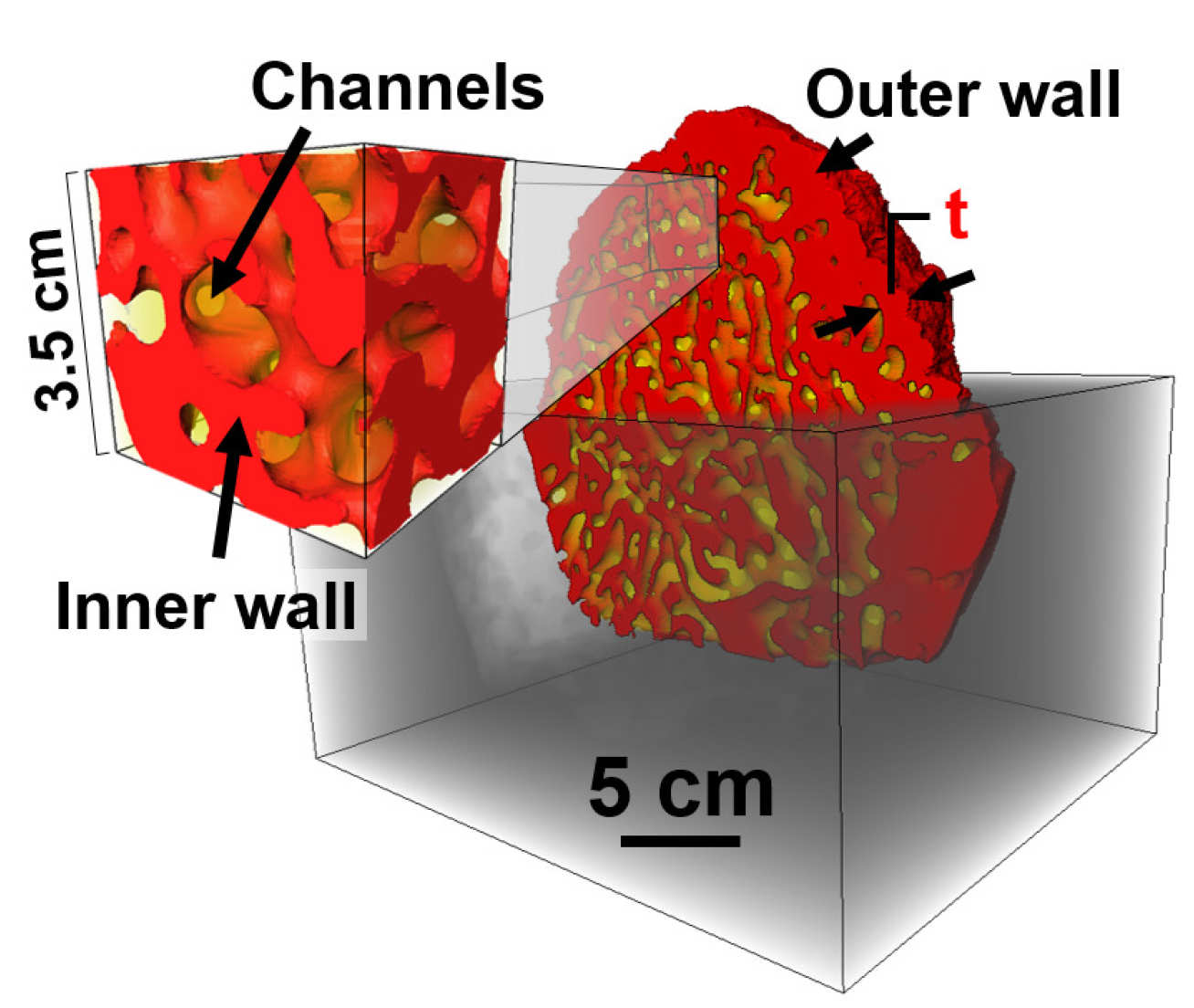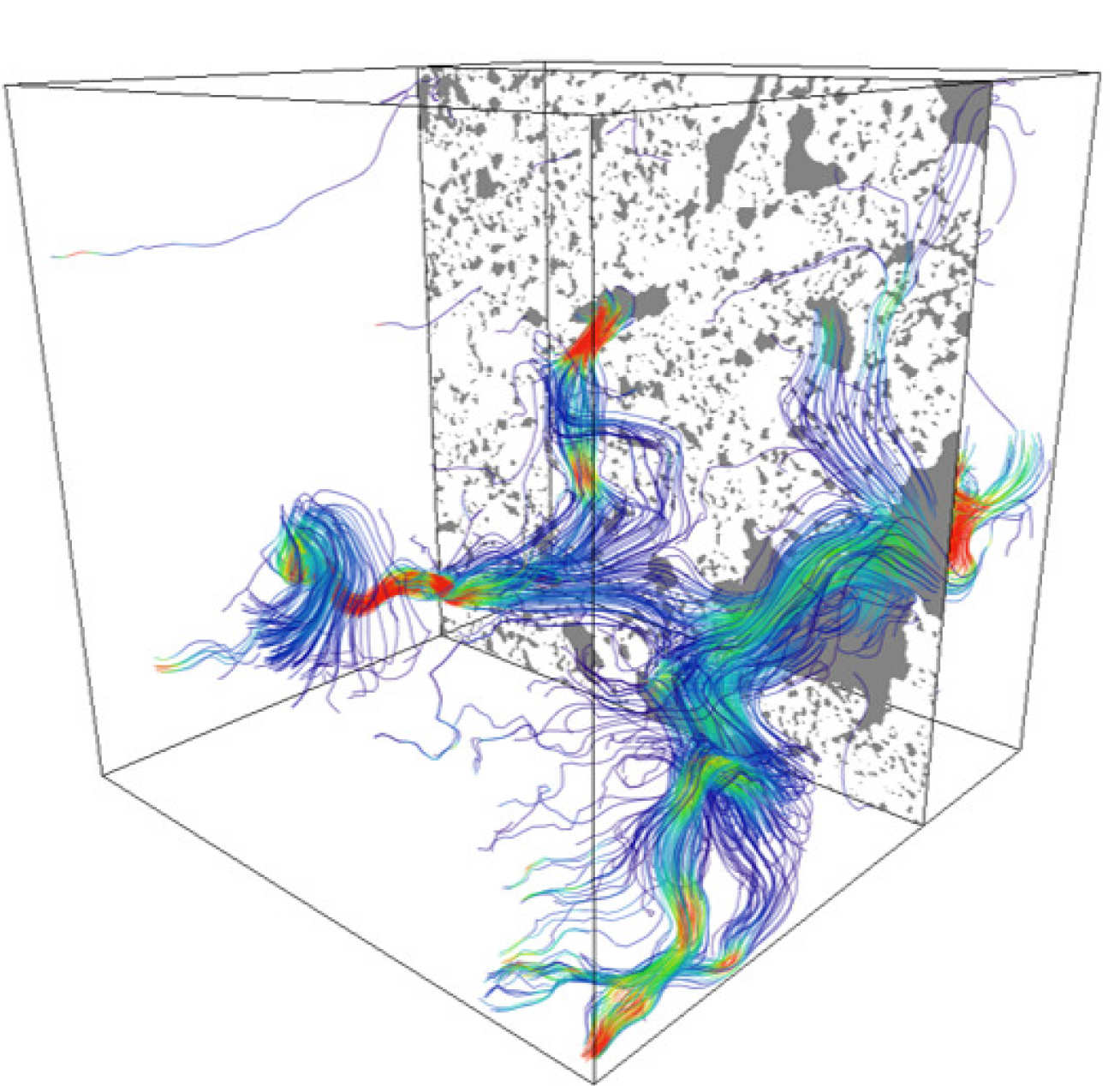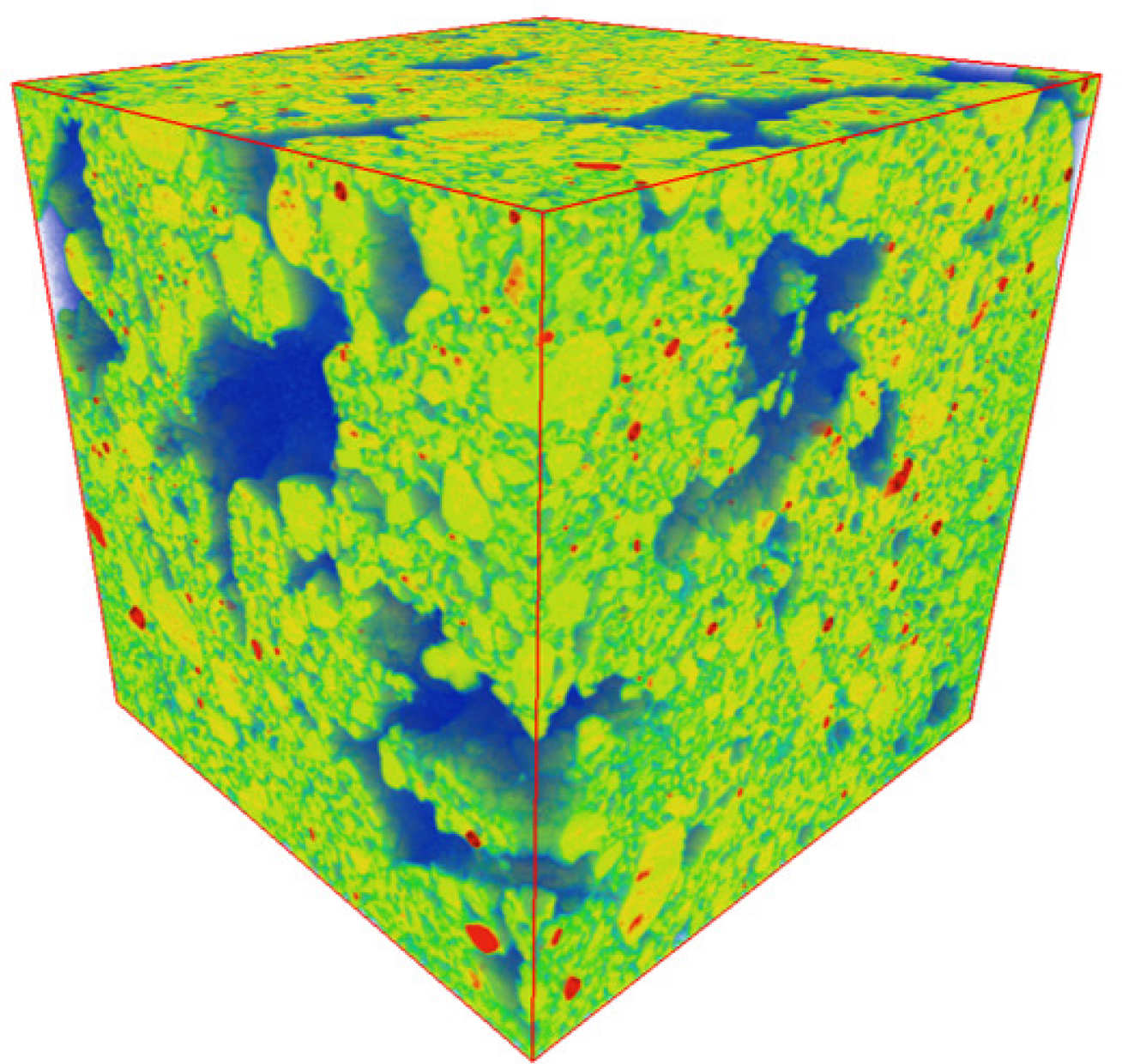New insight into termites’ architectural strategies could help us design more energy efficient self-sustaining buildings for humans.
Many species of termite, whose societies are built on hierarchies of kings, queens, workers, and soldiers, live in towering nests that are ventilated by a complex system of tunnels.
Our findings could help us understand how to design energy efficient, self-sustaining buildings. Professor Pierre Degond Department of Mathematics
The nests, also known as mounds, protrude from the ground like skyscrapers and can grow as tall as seven metres. They are also self-cooling, self-ventilating, and self-draining – but until now the mechanisms behind these climate control features has remained unknown.
A group of engineers, biologists, chemists and mathematicians lead by Imperial College London, the University of Nottingham, and CNRS-Toulouse in France, have now looked closer than ever before at how these nests work using 3D X-ray imaging.
They found clues about how the small holes, or pores, in the mound walls

help termite homes stay cool, ventilated, and dry.
Lead author Dr Kamaljit Singh, from Imperial’s Department of Earth Science & Engineering, said: “Termite nests are a unique example of architectural perfection by insects. The way they’re designed offers fascinating self-sustaining temperature and ventilation controlling properties throughout the year without using any mechanical or electronic appliances.”
In their new study, published in Science Advances, the researchers sourced termite nests from the African countries Senegal and Guinea and studied them using two types of 3D X-ray imaging.
First, they scanned the nests at lower resolutions to measure the nests’ larger features, like walls and corridors known as channels.
From the images they calculated the thickness of the nests’ inner and outer walls, as well as the structural details of inner channels which termites use to get around the nest.
'Architectural perfection'
Not only do these remarkable structures self-ventilate and regulate their own temperatures – they also have inbuilt drainage systems. Our research provides deeper insight into how they manage this so well. Dr Kamaljit Singh Department of Earth Science and Engineering
The researchers found that networks of larger and smaller pores in the nest walls help exchange carbon dioxide (CO2) with the outside atmosphere to help ventilation.
Larger micro-scale pores are found to be fully connected throughout the outer wall providing a path across the walls, and by using 3D flow simulations, the authors showed how CO2 moves through the nests to the outside.
The simulations showed that the large micro-scale pores in nest walls are useful for ventilation when the wind outside is faster, as CO2 can leave freely. However in slower wind speeds, the larger pores can also help to release CO2 through diffusion.
Dr Singh said: “This is a remarkable feature that lets the nest ventilate regardless of the weather outside.”
Nests are usually found in hotter regions, which means they must stay cool.

Indeed, the authors found that the larger pores also help regulate temperatures inside nests. The pores, which lie in the outer walls of the nest, fill with air which reduces heat entering through the walls – similarly to how the air in double glazed windows helps keep the heat inside.
Considering the crucial role the pores play, the team also wondered what happens when it rains and the pores become blocked by water.
They found that the nests use ‘capillary action’ – where liquid flows through small spaces without external help from gravity – that forces rain water from the larger pores to the smaller pores. This ensures the larger pores keep stay open to keep ventilating the nest.
Dr Singh said: “Not only do these remarkable structures self-ventilate and regulate their own temperatures – they also have inbuilt drainage systems. Our research provides deeper insight into how they manage this so well.”
The scientists say the newly found architecture within termite nests could help us improve ventilation, temperature control, and drainage systems in buildings – and hopefully make them more energy efficient.

Co-author Professor Pierre Degond from Imperial’s Department of Mathematics said “The findings greatly improve our understanding of how architectural design can help control ventilation, heat regulation, and drainage of structures – maybe even in human dwellings. Our findings could help us understand how to design energy efficient, self-sustaining buildings.”
Co-author Dr Bagus Muljadi from the University of Nottingham said: “We know that nature holds the secrets to survival. To unlock them, we need to encourage global, interdisciplinary research.
“This study shows we have a lot more to learn from mother nature when it comes to solving even the most important 21st century problems.”
This research was funded by the Engineering and Physical Sciences Research Council (EPSRC), the Royal Society, and the Wolfson Foundation.
‘The architectural design of smart ventilation and drainage systems in termite nests’ by Kamaljit Singh, Bagus P. Muljadi, Ali Q. Raeini, Christian Jost, Veerle Vandeginste, Martin J. Blunt, Guy Theraulaz, Pierre Degond', published 22 March 2019 in Science Advances.
Supporters


Article text (excluding photos or graphics) © Imperial College London.
Photos and graphics subject to third party copyright used with permission or © Imperial College London.
Reporter

Caroline Brogan
Communications Division

Contact details
Email: press.office@imperial.ac.uk
Show all stories by this author
Leave a comment
Your comment may be published, displaying your name as you provide it, unless you request otherwise. Your contact details will never be published.




Comments
Comments are loading...